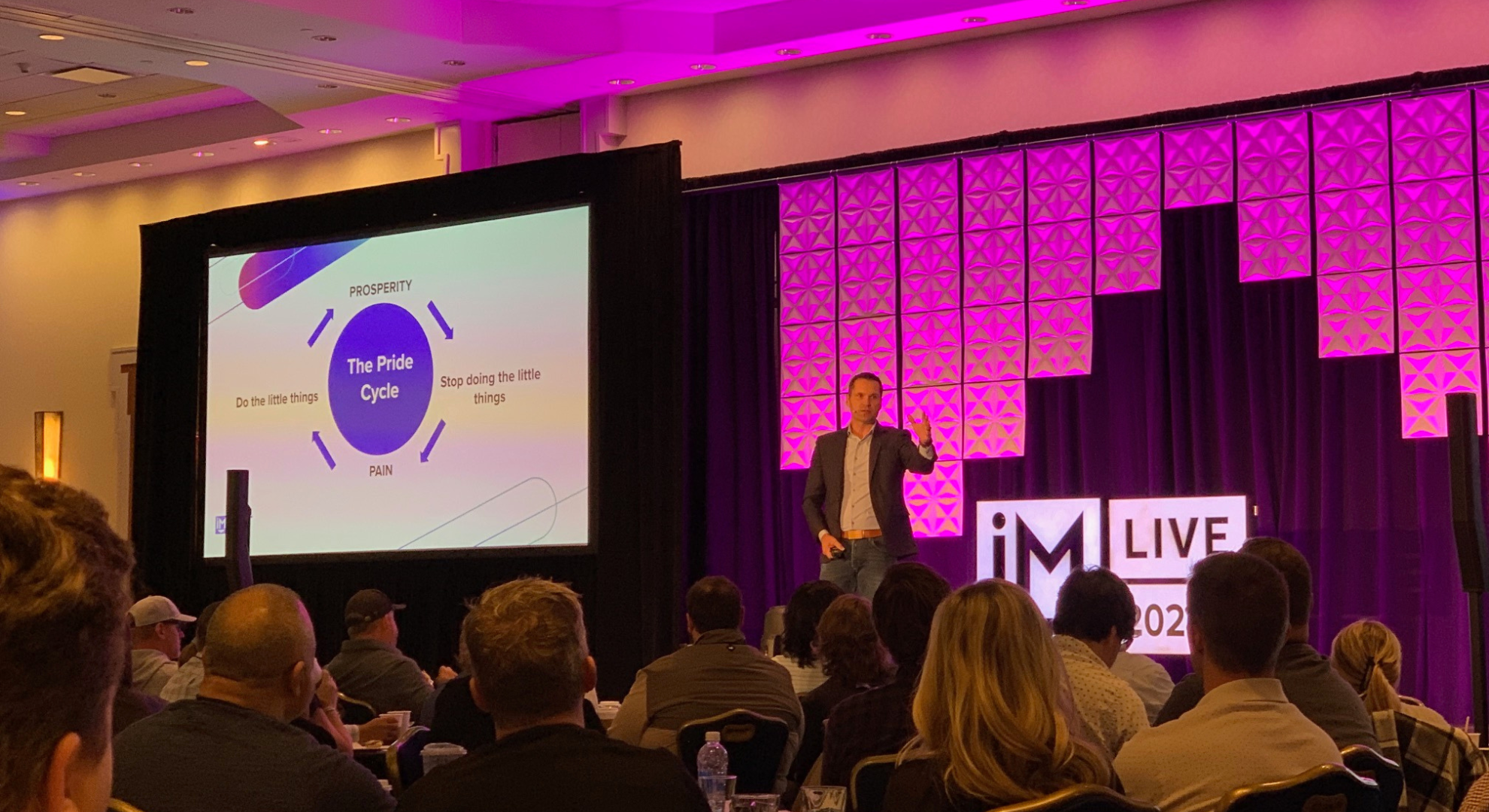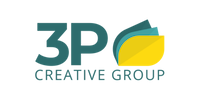The TrustBuilder Framework
Introduction
Let’s face it: every CEO or business owner worth their salt “knows” intuitively that trust is crucial. But when it comes to making business decisions, like where to invest your marketing budget or which sales methodology you want your salespeople to follow, we think tangible things.
Trust is intangible and often disregarded as a by-product or a result of marketing campaigns or sales tactics. But it never is the strategy because we can’t really put our finger on why it is so important and how we can use it. This always bothered me.
Without intentional trust building:
- We have to work so much harder in our marketing and sales activities as we have to overcome the feeling of distrust our buyers now have by default,
- We are always in a race to the bottom, competing on price rather than value,
- We have to scramble to acquire new customers rather than cherish the ones we have already,
- We are more vulnerable in a crisis or an economic downturn,
- and much more.
My name is Hannah Eisenberg, and I have developed the TrustBuilder Framework to change precisely that. It translates the intangible into concrete steps that, if followed sequentially, result in not only long-lasting, almost unshakable trust but also in highly educated customers and market leadership by you redefining the rules.
What Is Trust?
How would you define trust?
Take a moment to think about what trust means to you. Does your definition change if you think about trusting a loved one, a business partner, or a salesperson?
If you struggle to come up with a concise definition, you aren’t alone. I don’t know if anyone has ever done this, but I bet you that if you ask a hundred people what trust means, you will probably get a hundred slightly different answers.
Like faith, consciousness, or love, trust is difficult to define because it is an abstract concept with many facets and nuances that depend on individual perceptions, context, and relationships.
- Trust Is Highly Subjective. First of all, trust is inherently subjective. Like so many of our feelings, trust is based on individual experiences, emotions, and perceptions. I might deem something trustworthy that you would never trust and the other way around.
- Trust Is Affected By Interpersonal Expectations and Social Norms. The way we trust is often influenced by the people we interact with and the culture we are a part of. Different people and cultures have different expectations and norms around trust. For example, my personal values, upbringing, or societal influences will heavily influence what constitutes trustworthiness for me.
- Trust Overlaps With Related Concepts. Where does trust end and faith start? How are trust and expectation different? Trust is very difficult to define as it overlaps with related concepts such as confidence, faith, reliance, and expectation, and distinguishing them from one another isn’t always straightforward. For example, confidence involves trust. However, trust also includes aspects of emotional reliance - beyond mere confidence in abilities.
- Trust Is Multi-Dimensional. If and how much we can trust someone depends on various dimensions, such as someone’s competence, benevolence, integrity, and reliability. These dimensions are often interdependent or overlapping with each other.
- Trust Is Dependent On The Context. Depending on the context, relationship, or situation, some of those dimensions play a greater role than others in what trust really means to us. For example, in a boss-employee relationship, competence and reliability are the primary drivers of trust, while in a personal relationship, benevolence and integrity might have a greater influence on whether or not we can trust someone.
- Trust Is Dynamic. Trust is always fluid and never static. It can be painstakingly built over time and lost in an instant. It can be maintained, but it evolves over time. And it is continuously shaped by our interactions and experiences.
- Trust Requires Taking Risks & Being Vulnerable. In order for me to trust someone, I need to be willing to take risks and therefore be vulnerable based on expectations that the person I trust will come through. In other words, without risks and vulnerability, no trust is required. However, risk tolerance and level of vulnerability are highly subjective and depend on the context we are in at that moment.
- Trust Is Highly Complex. Trust is a deeply personal and highly emotionally charged construct, which makes it highly complex. In addition, the processes through which trust develops and deteriorates add another layer of complexity.
These eight realities make defining trust in a universally acceptable way very difficult. However, to really understand why trust is so important and should act as your North Star with any business decision you make, we need to truly understand what trust is (and is not) and what makes us trust someone.
Gartner defines brand trust as a customer’s ability to feel secure in the belief that a company will consistently follow through on its stated intentions to customers and others, particularly in times of difficulty. Brands pay a heavy price if they don’t meet customer expectations.
What Is Trust?
What is trust? For most people, trust means that we feel confident that someone be there for us (and not let us down) when we need them the most.
“Trust is the reliance on or confidence in the dependability of someone or something.” - American Psychology Association.
“Trust is the assured reliance on the character, ability, strength, or truth of someone or something.” Merriam-Webster dictionary
“Trust is the firm belief in the reliability, truth, or ability of someone or something.” - Oxford Dictionary
For example, based on this definition, in personal relationships for example, trust is defined as the degree to which I am confident that I can depend on a spouse, friend, family member, or group of people to do as they said they would.
However, this definition, per se, doesn’t highlight what’s at stake if I trust someone. It only focuses on how dependable we think someone is. Now, I am not a psychologist, but in the context of this framework, I want to push this definition a lot further.
Social psychologists and organizational scholars, such as Mayer, Davis, and Schoorman (1995), define trust a little differently by focusing on the risks someone has to take and the vulnerability they have to be willing to show in order to trust. They define trust as:
"the willingness of a party to be vulnerable to the actions of another party based on the expectation that the other will perform a particular action important to the trustor, irrespective of the ability to monitor or control that other party.'
So, at its core, trust is a psychological state in which we (the trustor) accept potential risks and become vulnerable to the actions of another person or entity (the trustee). Our trust is based on the positive expectation that the trustee will act towards us in a beneficial or non-harmful way. In other words, we must have confidence that the person or entity we trust will meet our expectations, even though we have limited control over their actions.
This definition really resonates with me because for me, trust is defined as the willingness to be vulnerable and taking a risk without fully (and sometimes not at all) knowing if the other person will come through.
This is very important to understand: Trust isn’t defined primarily by the intrinsic honesty of other people but rather by our OWN perception of their predictability. In other words, what are our expectations of others if we are unsure of their motives, and how vulnerable are we willing to be in the face of that uncertainty? Simply put, your trust in someone is measured by your willingness to give others the benefit of the doubt when you take a risk.
The TrustBuilder Framework
Over the last year, I sat down and created a step-by-step framework that any organization and entrepreneur can use to intentionally and purposefully build trust: The TrustBuilderTM Framework. It is based on my 25 years of experience in marketing strategy and sales enablement as well as coaching dozens of companies over the last years.

It consists of three main layers:
- Fundamental Cornerstones (Competency, Reliability, and Integrity). In this layer, you build the cognitive, fact-based trust required for an initial or a one-time purchase or transaction. This is the fundamental trust without any business relationship would be impossible.
- Transitional Cornerstones (Empathy, Respect, and Benevolence). Here, you deepen the fact-based trust you built and turn it into emotional, relationship-based trust. This enables long-term customer loyality, retention, etc.
- Transformational Cornerstones (Social Proof, Shared Values, and Social Alignment). Finally, in the last layer, you transform that emotional trust into almost unshakable trust by creating a personal and ethical bond between the customer and the brand. You do this through external validation, shared values, and social alignment. Choosing your brand not only becomes the socially expected choice but also the preferred one.
Let's go through each layer in more detail.
The Foundational Cornerstones Of Trust: Competence, Reliability, and Integrity
Before we can trust any brand, company, product, or service, we as buyers must believe that what we are buying will meet our expectations or perform as we expect. Essentially, we have to be able to answer the question “Am I getting what I am paying for?” or “Is this worth it?” sufficiently enough before making a purchase. This is the minimum baseline we have to meet for a transaction to occur.
Consequently, on the first level, we need to build a rational and stable foundation for cognitive trust based on facts. They are essential for establishing initial credibility, showing consistency, and laying the groundwork for a genuine relationship.
These tenets are:
- Competence. Trust often starts with competence. Buyers trust a brand or individual when they demonstrate the expertise to deliver on promises. Competence reassures buyers that expectations will be met. Simply put, trust cannot be built without competence.
- Reliability. Reliability builds on competence by demonstrating the consistent application of skills and expertise. It shows a track record of delivering on promises, creating predictability, and reassuring buyers that their trust is well-placed.
- Integrity. Integrity ensures that the brand or person’s actions align with ethical principles, establishing moral soundness. When combined with competence and reliability, integrity strengthens the buyer’s perception that the brand will act in good faith and will come through.
These steps are the fundamental cornerstones because they must be addressed before pursuing anything else. Skipping these is not an option if you are looking for long-lasting success. Can you sell a super-comfy blanket onesie by creating a viral social media campaign leading to a long-form sales squeeze page with tons of social proof? Sure, but these foundational cornerstones must be strong, deeply embedded, and unmovable for long-lasting business success. Anything else is like building a skyscraper on sand — it will eventually collapse.
Why It Works
Establishing trust at this level lays the groundwork for deeper, long-term trust that evolves into mutually beneficial relationships. However, this basic level of trust is often sufficient in low-risk scenarios (e.g., cautious trust), such as one-time, low-value purchases or commoditized markets. In these cases, buyers simply need reassurance that the product will perform as expected.
Even then, when faced with equally competent options — like choosing between mid-range washing machines — integrity and transparency become the deciding factors. These elements determine the message's trustworthiness and ultimately guide the final purchase decision.
The Pre-Requisite: Complete Transparency
You cannot build trust by being competent and reliable while acting with integrity alone. It isn’t enough just to DO or BE these things; we must communicate them effectively. Therefore, the underpinning principle or pre-requisite for this level is complete transparency. This requires us to be completely highly transparent, sharing unbiased, accurate, and clear information, even if it means sharing unfavorable or uncomfortable things sometimes.
The Result: An Educated Customer That Trusts You
If you consistently answer your customers’ questions in a completely transparent way, you end up with a highly educated buyer. Complete transparency results in radical customer education. If you are familiar with Marcus Sheridan’s Endless Customers (formerly known as They Ask You Answer), you will know that being willing to talk about the things that others aren’t willing to talk about and showing the things that others aren’t willing to show will not only earn you the respect of your buyers, but it will make you stand out in your market as the best teacher and the Voice of Trust. This includes written, audio, or video content on topics such as cost and price, potential problems, versus and comparisons, best of, and customer reviews.
As a result, your customers become educated about your industry, the solution approaches available to them, and which products are best suited for them. They will understand the value and they are able to make the best choices for themselves.
The Transitional Cornerstones Of Trust:
Empathy, Respect, And Benevolence
In the second level of the TrustBuilders Framework, we are now transitioning from the cognitive trust we have just built to building emotional or relational trust. This helps us build deeper and longer-lasting relationships.
Essentially, we are answering the questions: Does this company understand how I feel? Do they respect my feelings and perspective, even if they differ from theirs? And do they care about my well-being and want to support me?
- Empathy. Having and showing empathy is crucial for building trust. Empathy refers to the ability to understand and share another person’s feelings, specifically in a way that allows you to anticipate their needs and concerns within the relationship. This creates a sense of safety and encourages vulnerability.
- Respect. Respecting your buyers and customers shows them that you not only consider and value their thoughts, feelings, and boundaries (building on empathy), but also that you recognize their autonomy and agency within the relationship. Showing respect recognizes that their trust is important to you.
- Benevolence. Benevolence in this context refers to a company having genuine goodwill and a desire to support the other person's well-being, even when there is no immediate benefit to yourself. This not only strengthens the trust you build through empathy and respect but also highlights your reliability and integrity by demonstrating a willingness to prioritize your client’s best interest over profit. Benevolence also enhances transparency, as clients perceive the brand’s openness and honesty as rooted in care.
By cultivating empathy, respect, and benevolence, you build strong emotional trust with your customers, buyers, and partners. This leads to increased loyalty, positive word-of-mouth referrals, and ultimately, greater business success.
Why It Works
You probably heard the saying “We want to buy from people, not companies.” This speaks to our most basic needs as human beings to be part of a bigger tribe, to be social, and feel safe. We want to build relationships with the people we do business with. And for this to happen, we need to feel that the other person understand our needs and wants, respects us for who we are, and has our best interests at heart. If these are genuinely met, a relationship can develop and deeper trust is build.
The Underpinning Pre-Requisite: Unapologetic Customer Alignment
Whenever I coach my clients on this level, I stress the importance of being genuine here. This is not about how to manipulate your buyers into feeling or thinking that you feel any of these things, but to develop a culture that empowers your employees to actually be empathetic, respectful, and do what is best for the customer. The requirement for this is to have what I call ‘unapologetic customer alignment.’ You truly seek to understand your buyers’ fears, worries, and concerns, you align with your customer’s needs and wants, and you change your business processes and best practices to serve your customers first.
The Result: Customer Advocacy
Once you do that, you advocate for your customers. You change your industry by demanding fair prices, better customer experiences, customer-friendly practices, and so on - even it goes against established industry conventions. You start to ruffle feathers, but you are starting to implement change and your customers will respect you for it and start seeing you as a market leader.
The Foundational Cornerstones Of Trust: Competence, Reliability, and Integrity
Before we can trust any brand, company, product, or service, we as buyers must believe that what we are buying will meet our expectations or perform as we expect. Essentially, we have to be able to answer the question “Am I getting what I am paying for?” or “Is this worth it?” sufficiently enough before making a purchase. This is the minimum baseline we have to meet for a transaction to occur.
Consequently, on the first level, we need to build a rational and stable foundation for cognitive trust based on facts. They are essential for establishing initial credibility, showing consistency, and laying the groundwork for a genuine relationship.
These tenets are:
- Competence. Trust often starts with competence. Buyers trust a brand or individual when they demonstrate the expertise to deliver on promises. Competence reassures buyers that expectations will be met. Simply put, trust cannot be built without competence.
- Reliability. Reliability builds on competence by demonstrating the consistent application of skills and expertise. It shows a track record of delivering on promises, creating predictability, and reassuring buyers that their trust is well-placed.
- Integrity. Integrity ensures that the brand or person’s actions align with ethical principles, establishing moral soundness. When combined with competence and reliability, integrity strengthens the buyer’s perception that the brand will act in good faith and will come through.
These steps are the fundamental cornerstones because they must be addressed before pursuing anything else. Skipping these is not an option if you are looking for long-lasting success. Can you sell a super-comfy blanket onesie by creating a viral social media campaign leading to a long-form sales squeeze page with tons of social proof? Sure, but these foundational cornerstones must be strong, deeply embedded, and unmovable for long-lasting business success. Anything else is like building a skyscraper on sand — it will eventually collapse.
Why It Works
Establishing trust at this level lays the groundwork for deeper, long-term trust that evolves into mutually beneficial relationships. However, this basic level of trust is often sufficient in low-risk scenarios (e.g., cautious trust), such as one-time, low-value purchases or commoditized markets. In these cases, buyers simply need reassurance that the product will perform as expected.
Even then, when faced with equally competent options — like choosing between mid-range washing machines — integrity and transparency become the deciding factors. These elements determine the message's trustworthiness and ultimately guide the final purchase decision.
The Pre-Requisite: Complete Transparency
You cannot build trust by being competent and reliable while acting with integrity alone. It isn’t enough just to DO or BE these things; we must communicate them effectively. Therefore, the underpinning principle or pre-requisite for this level is complete transparency. This requires us to be completely highly transparent, sharing unbiased, accurate, and clear information, even if it means sharing unfavorable or uncomfortable things sometimes.
The Result: An Educated Customer That Trusts You
If you consistently answer your customers’ questions in a completely transparent way, you end up with a highly educated buyer. Complete transparency results in radical customer education. If you are familiar with Marcus Sheridan’s Endless Customers (formerly known as They Ask You Answer), you will know that being willing to talk about the things that others aren’t willing to talk about and showing the things that others aren’t willing to show will not only earn you the respect of your buyers, but it will make you stand out in your market as the best teacher and the Voice of Trust. This includes written, audio, or video content on topics such as cost and price, potential problems, versus and comparisons, best of, and customer reviews.
As a result, your customers become educated about your industry, the solution approaches available to them, and which products are best suited for them. They will understand the value and they are able to make the best choices for themselves.
Get Started Building Trust Today
The best way to start building trust right now is to get in touch with me directly. You can email me at hannah@trustbuilder-coach.com or
Over the next few months, I will publish more content, such as video series, podcast episodes, and blog articles. Be sure to subscribe to stay up to date.
- Request a free physical copy of the Win With Trust book when it will be published in August 2025
- Take the TrustBuilder Assessment (coming soon)
- Subscribe to the TrustBuilder Podcast (Spotify)
- Subscribe to the TrustBuilder Newsletter (coming soon)
Author:
From Our Blog
Stay up to date with what is new in our industry, learn more about the upcoming products and events.

From Trust Out Of Necessity To Distrust By Default: How Trust Evolved Over The Last 50 Years

The Key to Building Trust in a Zero-Click World: Highlights from IMPACT Live



.png?width=200&height=200&name=HannahEisenberg%20(1).png)